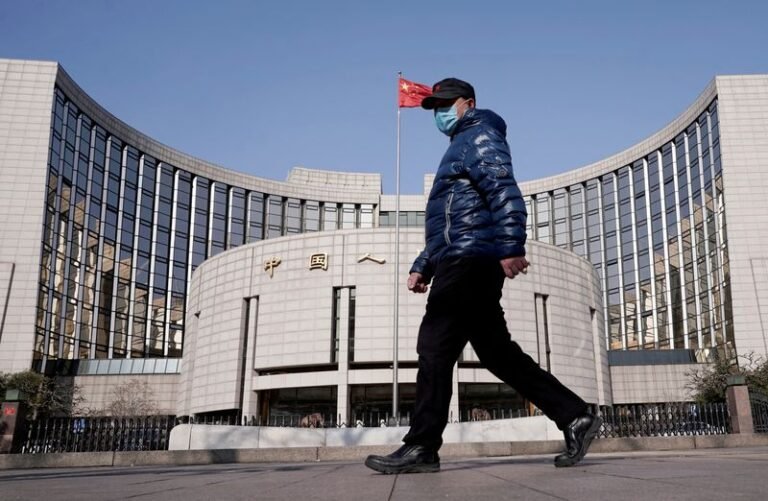
Worsening COVID-19 outbreaks across the country in recent weeks and weak domestic and international demand have weighed on the world’s second-largest economy, with a wave of recent economic data pointing to a further loss of steam.
Meanwhile, global tightening has yet to show any clear sign of a turning point, limiting Beijing’s room for maneuver in its monetary easing.
In a poll this week of 31 market watchers, all participants predicted the People’s Bank of China (PBOC) would keep the rate on the medium-term lending facility (MLF) unchanged for 2 years at 75% on Tuesday.
Among them, 22 respondents expected the PBOC to fully hand over 1 trillion yuan ($142 billion) of such loans maturing on the same day.
Of the remaining nine traders and analysts, five expected a partial refinancing, while the other four believed the central bank would inject additional fresh funds to support the slowing economy.
“We expect a full or near-full rollover to support liquidity, while the chance of a reduction in required reserve ratio (RRR) to replace some of the easement looks small as policy measures are targeted,” he said. Frances Cheung, installment strategist at OCBC Bank.
The big chance of the 1 trillion yuan MLF loan, the biggest this year, sparked market debates over whether the PBOC would reduce the amount of cash banks must set aside as reserves to replenish liquidity, but some traders said a reduction in the RRR would be too strong a signal of policy easing.
China, along with Japan, has been a major exception in the wave of global austerity, with Beijing focusing on strengthening its COVID-hit economy. But investors fear that the widening of the monetary divergence will trigger capital outflows and a depreciation of the yuan.
China’s decision to cut the FML rate in August widened interest rate spreads against the US and accelerated the decline in the yuan. [FRX/]
China’s central bank “walks a fine line between stimulus and financial instability, as too much credit-driven activity has been the ultimate source of the current crisis in the property market,” said global chief Win Thin. for currency strategy at Brown Brothers Harriman.
Official data showed new bank lending in China fell more than expected in October from the previous month, while overall credit growth slowed as the COVID-19 outbreak and a slowdown in the property sector weighed on the economy.
($1 = 7.0414 Chinese Yuan)